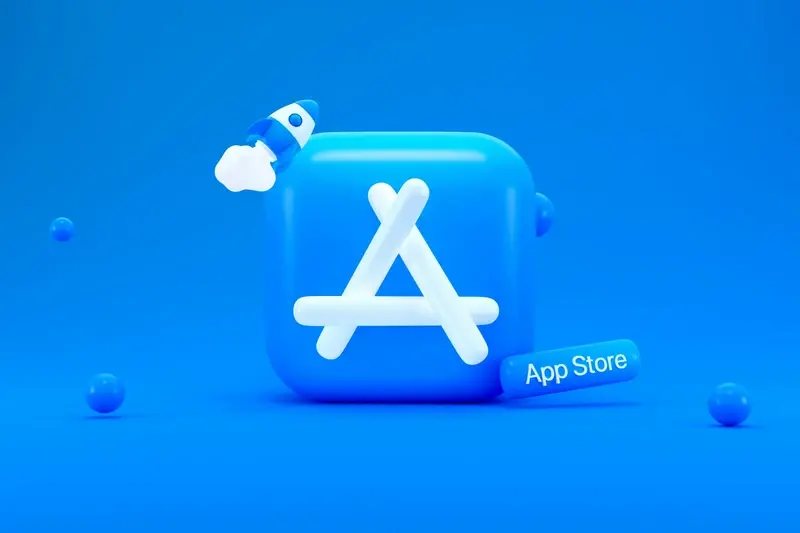What Happens After My App Is Built?
Most people think the hard work ends when their app hits the app store. Wrong! That's actually when the real work begins. Building your app is just the first step in what becomes a long-term relationship between you, your users, and your digital product. Once your app goes live, you'll need to think about app maintenance, regular updates, ongoing support, and post-launch management—all the things that keep your app running smoothly and your users happy.
The truth is, launching an app without a plan for what comes next is like opening a shop and then never restocking the shelves or fixing the broken door handle. Your app will need constant attention, tweaks, and improvements to stay relevant and functional. User expectations change, operating systems update, bugs appear out of nowhere, and competitors launch features that make yours look outdated.
The most successful apps aren't the ones that launch perfectly—they're the ones that evolve perfectly
This guide will walk you through everything that happens after your app goes live. We'll cover the technical stuff like maintenance and bug fixes, the strategic bits like planning new features, and the business side like managing user feedback. By the end, you'll understand exactly what it takes to keep your app thriving long after launch day. Let's start with what happens in those first few days when your app officially goes live.
Your App Goes Live
The moment your app hits the app stores feels brilliant—like watching your first child take their first steps. But here's what I tell all my clients: going live is just the beginning, not the finish line. You've built something amazing, but now the real work starts.
The First 48 Hours Matter Most
Those first couple of days after launch are absolutely mad. Downloads might trickle in slowly or come flooding all at once—there's no way to predict it. I've seen apps get featured by Apple out of nowhere and suddenly have thousands of users trying to sign up at the same time. That's why we always do a soft launch first with a small group of beta testers.
Keep your phone close during this period. Seriously. If something breaks, you want to know about it straight away. Users won't wait around for fixes—they'll just delete your app and move on to something else.
What to Watch For
- Crash reports coming through your development console
- User reviews mentioning bugs or problems
- Server performance if your app connects to the internet
- Download numbers and where people are finding your app
The good news? Most launches go smoothly if you've done your testing properly. But being prepared means you can sleep better at night knowing you're ready for whatever comes next.
Keeping Your App Working Smoothly
Once your app is live in the app stores, the real work begins—and I'm not just saying that to scare you! App maintenance is like looking after a car; you can't just drive it forever without checking the oil or topping up the petrol. Your app needs regular attention to keep running properly, and this ongoing app support isn't something you can ignore if you want happy users.
The thing is, mobile operating systems change all the time. Apple releases new versions of iOS, Google updates Android, and suddenly your app might not work quite right on the latest devices. I've seen apps that worked perfectly fine one day become crashy messes the next, simply because a new OS update changed how something worked behind the scenes.
What App Updates Actually Include
Post-launch app management covers everything from fixing small bugs that users report to making sure your app still works when new phones come out. Sometimes it's updating the app's code to work with new security requirements—other times it's tweaking things to make sure your app looks right on the newest screen sizes.
Set aside budget for ongoing maintenance from day one. Most apps need at least one maintenance update every 3-6 months to stay healthy. Understanding what maintenance costs to expect will help you plan your budget properly.
Adding New Features and Updates
Your app isn't finished just because it's live—not by a long shot. I've watched countless app owners make the mistake of thinking their job is done once they hit publish. The reality is that successful apps grow and change over time, just like any good product should.
Planning Your Next Move
New features don't appear out of thin air; they come from listening to your users and watching how they actually use your app. Sometimes people use your app in ways you never expected—and that's brilliant feedback for what to build next. User reviews will tell you what's missing, analytics will show you where people get stuck, and your own experience using the app will highlight gaps you hadn't noticed before.
Rolling Out Changes
Here's something I learned the hard way: don't change everything at once. Big updates can confuse existing users who've got comfortable with how things work. Instead, add features gradually and make sure each one actually improves the experience rather than just adding complexity for the sake of it.
Most successful apps release updates every few weeks or months. Some updates fix small issues, others add exciting new capabilities that keep users engaged and coming back for more. Understanding what makes apps truly stellar helps guide these update decisions.
Fixing Problems When They Pop Up
Let's be honest—bugs happen. I've been in this game long enough to know that no app is perfect from day one, and anyone who tells you otherwise is probably trying to sell you something! Even the biggest tech companies release updates constantly to fix issues that crop up after launch. The key is being ready to tackle these problems quickly when they appear.
Common Issues You'll Face
Most app problems fall into a few categories: crashes on certain devices, slow loading times, features not working as expected, or compatibility issues with new operating system updates. Some bugs only show up when thousands of people start using your app in ways you never tested—and that's completely normal.
The best app maintenance strategy is being proactive rather than reactive when it comes to fixing problems
How Fast Should You Fix Things?
Speed matters, but so does getting the fix right. Critical bugs that stop people from using your app need immediate attention—we're talking hours, not days. Less serious issues can wait for your regular update cycle. The trick is having a system in place to categorise problems by severity and having your development team ready to jump on the urgent ones. Remember, ongoing app support isn't just about fixing what's broken; it's about maintaining user trust and keeping your app running smoothly for everyone.
Watching How Your App Performs
Once your app is live and people start using it, you'll want to know what's actually happening inside it. Think of it like having a dashboard in your car—you need to see how fast you're going, how much fuel you have left, and if anything needs attention. App analytics work the same way; they show you what users are doing, where they're getting stuck, and which bits they love most.
What You Should Be Tracking
There are loads of things you can measure, but some matter more than others. I always tell my clients to focus on the basics first—don't get overwhelmed by fancy metrics that sound impressive but won't actually help you make better decisions.
- How many people download your app each day
- How often people open and use your app
- Where users stop using your app or leave
- Which features get used most and least
- How long people spend in your app
- Which screens cause the most problems
Making Sense of the Numbers
Raw data doesn't mean much on its own. You need to look for patterns and trends over time. If you notice lots of people leaving on a particular screen, that's telling you something needs fixing. If downloads spike after you add a new feature, you know you're on the right track. The key is checking these numbers regularly—not obsessively, but consistently enough to spot issues before they become big problems.
Managing User Reviews and Feedback
Your app's reviews and feedback are like a direct line to your users' thoughts—and trust me, they're not shy about sharing them! I've watched many app owners get overwhelmed when the first wave of user feedback comes in, but here's the thing: this feedback is pure gold for your ongoing app support strategy.
Reading through reviews can feel a bit like opening Christmas presents—you never know what you're going to get. Some users will love your app and tell everyone about it; others will find issues you never even thought of. Both types of feedback are incredibly valuable for your post-launch app management.
Set up notifications for new reviews so you can respond quickly. Users appreciate when developers actually listen and respond to their concerns.
What to Look Out For
When managing feedback, keep an eye on these key areas:
- Bugs and crashes that users report consistently
- Feature requests that come up repeatedly
- Usability issues people struggle with
- Performance complaints about speed or battery drain
- Positive feedback about what's working well
Turning Feedback Into Action
The real magic happens when you use this feedback to guide your app maintenance and app updates. If five users mention the same bug, that goes straight to the top of your fix list. If users keep asking for a specific feature, that might be your next big update. This ongoing conversation with your users shapes how your app evolves over time.
Planning for Long-Term Success
Building an app isn't just about getting it live and hoping for the best—though I've seen plenty of people try that approach! The apps that really succeed are the ones where someone sits down and thinks about what happens next. What will people want in six months? What about next year?
Thinking About Growth
Your app will change as more people use it. That's just how it works. Users will ask for new features, complain about things that don't work well, and use your app in ways you never expected. The smart move is to plan for this from the start; not scramble to fix everything later when you're overwhelmed.
I always tell my clients to think about their app like a living thing that needs to grow. You'll need to add new features, fix bugs that pop up, and maybe even change how things work based on what users tell you. This means setting aside money each month for updates and improvements—not just building the app once and walking away. If you find yourself struggling with these ongoing challenges, it might be worth looking at common development struggles and how to address them.
Staying Relevant
Mobile phones change all the time. New versions come out, old features disappear, and new technologies appear. Your app needs to keep up with these changes or it'll start looking old and might even stop working properly. The apps that last are the ones that adapt and evolve with their users' needs. Learning from successful app development companies can provide valuable insights for staying competitive.
Conclusion
Building your app is just the beginning—I can't stress this enough. The real work starts once it's live and people are actually using it. Over the years, I've watched countless brilliant apps fade away because their creators thought the job was done at launch. That's like planting a garden and never watering it again!
App maintenance isn't glamorous, but it's what separates successful apps from the ones gathering digital dust. Your users expect regular updates, quick fixes when things break, and new features that keep them engaged. Post-launch app management means staying on top of these expectations whilst keeping an eye on performance metrics and user feedback.
The apps that thrive are the ones with dedicated ongoing app support—they're constantly evolving, improving, and adapting to what their users need. App updates aren't just technical necessities; they're opportunities to show your users you're listening and you care about their experience.
Look, I won't sugarcoat it—maintaining an app takes time, money, and patience. Some months you'll push out exciting new features; other months you'll be fixing bugs that came out of nowhere. But that's the nature of the beast, and honestly? It's what makes this industry so exciting. Your app is never truly finished, and that's exactly how it should be.
Share this
Subscribe To Our Learning Centre
You May Also Like
These Related Guides

What Makes An App Successful In The App Store?

How Do I Price My App For Maximum Revenue?



